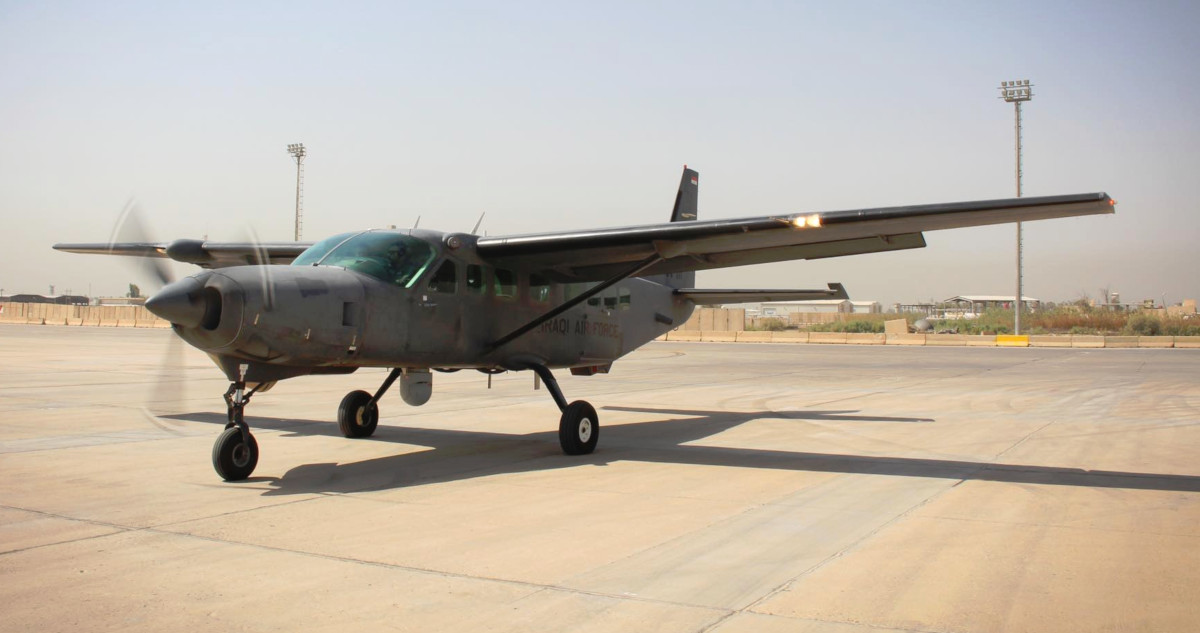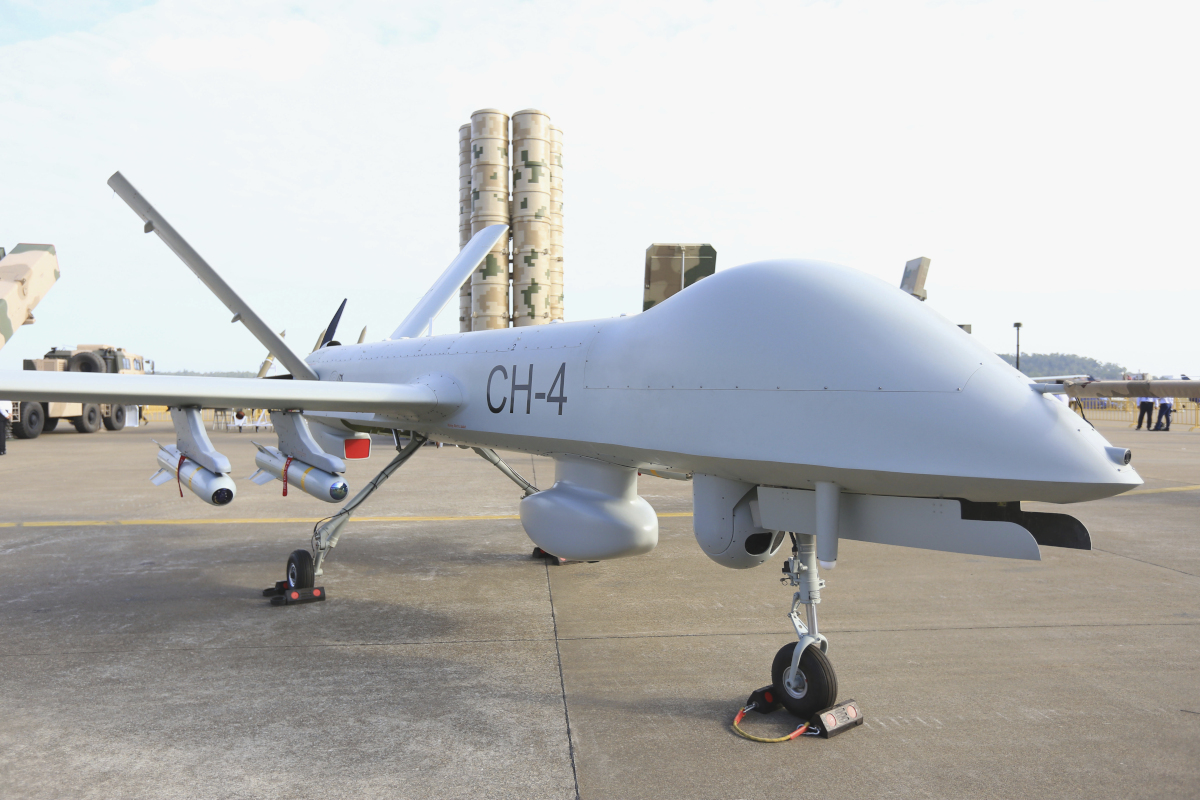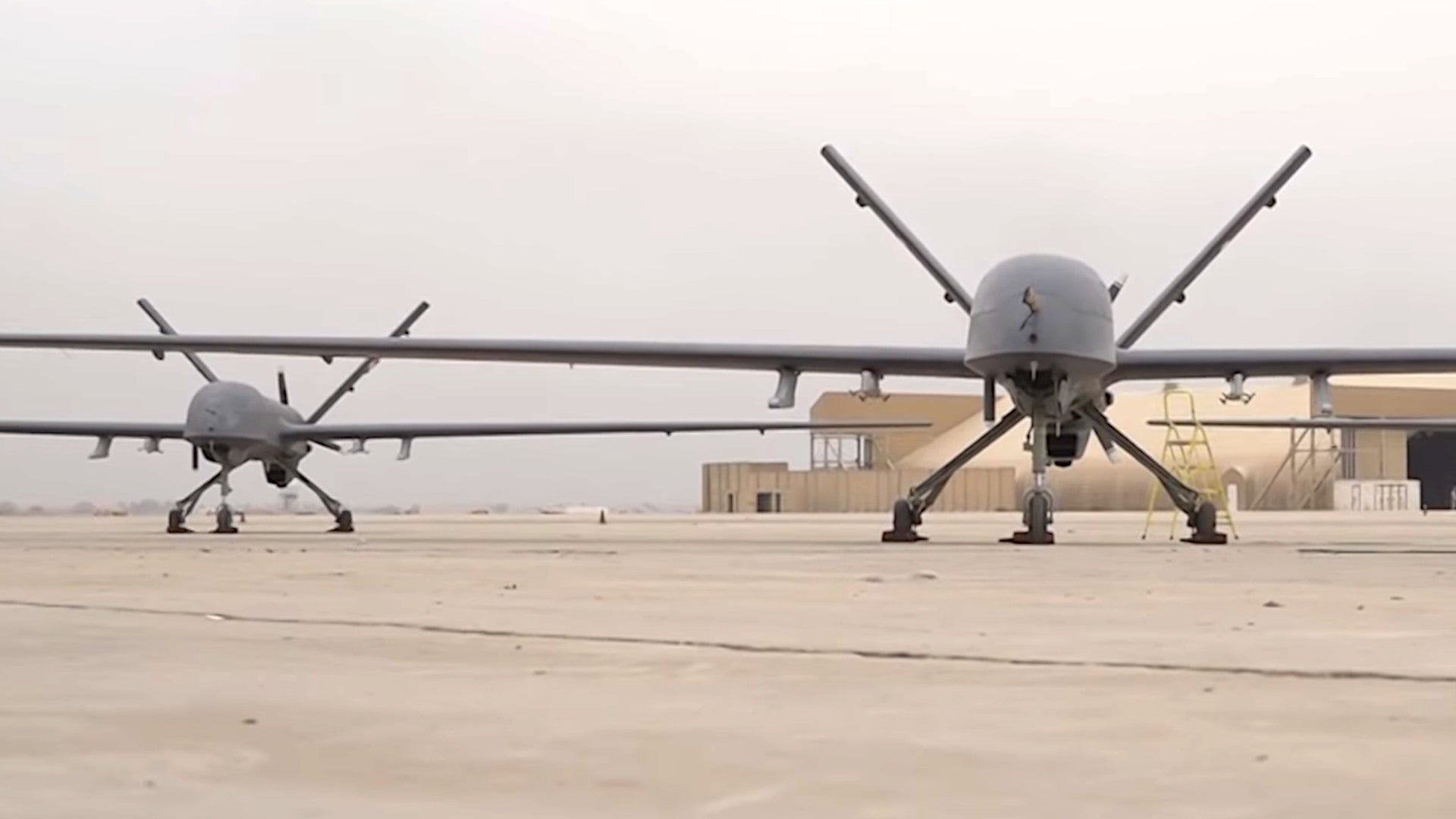As of the end of June, only one of Iraq’s Chinese-made CH-4B drones was fully mission capable, contributing to a major shortfall in intelligence, surveillance, and reconnaissance capacity, according to recent U.S. government report. Unspecified maintenance issues are apparently to blame, but the news does follow reports that other operators of the type have been less than pleased with its performance.
The new information about the state of the Iraqi CH-4Bs came in the latest Lead Inspector General report on Operation Inherent Resolve, the official name for U.S.-led coalition operations against ISIS in Iraq and Syria, which covered the period from April 1 to June 30, 2019. The Pentagon, Department of State, and Agency for International Development all contribute to these quarterly reviews. The same report said that Iraq’s fleet of “more than 10” smaller Boeing Insitu Scan Eagle drones had flown just two sorties in total since March 2019 due to a lapse in contractor maintenance support and unexplained signals interference issues.
Iraqi Security Forces (ISF) have “struggled with the availability” of the aerial intelligence, surveillance, and reconnaissance (ISR) assets, in general, according to the report. “Shortfalls have resulted in a 50 percent decrease in Iraq’s fixed-wing ISR sorties compared to the same period last year.”
It is unclear how many CH-4Bs Iraq has in total or how many of them might be at least partially mission capable. As with the Scan Eagles, the Lead Inspector General report only says the country has “more than 10” of these Chinese drones.

The Iraqis have been flying the CH-4B, which is in the same general size class as the U.S. MQ-1 Predator, since 2015 and are among its most prominent foreign users. The drones have a combat radius of around 155 miles and a maximum endurance of 14 hours. This allows them to cover significant portions of the country, even from bases south of the centrally-located capital Baghdad, and provide valuable surveillance capacity, including at night, with its sensor turret containing both electro-optical and infrared video cameras.
Without the CH-4Bs, the Iraqi military has few alternatives to provide persistent surveillance coverage, especially after dark, when insurgent and terrorist activity is typically more pronounced. The Iraqi Air Force has limited numbers of sensor-turret equipped Cessna C-208 Grand Caravans and ISR-configured Beechcraft King Airs. Coalition advisors’ “recent focus is on training Iraq’s Squadron 3, which operates C-208 manned ISR aircraft, to increase its operations,” according to the Lead Inspector General report.

The Iraqi Air Force has also been working to increase the use of the AN/AAQ-33 Sniper Advanced Targeting Pods (ATP) on its F-16IQ Viper combat jets on what are known as non-traditional ISR sorties. Unfortunately, the “operational impact has been negligible as this capability is in its infancy and extremely costly to use,” the quarterly review explained.

Aerial ISR could become extremely important for the Iraqis in the near future, given fears that ISIS may be attempting to exploit various regional geopolitical realities in order to regroup and mount a comeback. The Lead Inspector General report specifically noted that U.S. ISR aerial assets in the region had increasingly been retasked to respond to growing U.S. tensions with Iran. Additional assets had gotten redeployed out the theater entirely to meet demands elsewhere, such as in Europe and the Pacific region.
The low availability of the CH-4Bs has impacts beyond surveillance, too, as the drones can carry various weapons. Iraq purchased stocks of AR-1 TV-guided missiles, similar in general size to the U.S. AGM-114 Hellfire, and FT-9 GPS-guided bombs from China to go with its fleets. The missiles give the drones the ability to engage moving targets, while the bombs offer an all-weather strike capability against fixed targets. Between October 2015 and February 2018, the unmanned aircraft reportedly carried out at least 260 strikes against ISIS terrorists, which included destroying vehicle-borne improvised explosive devices that were a major threat to Iraqi forces on the ground.

The Lead Inspector General Report does not describe the exact maintenance issues that are now apparently plaguing Iraq’s CH-4B fleet. However, Iraq isn’t the only country to reportedly experience issues with the performance and overall quality of these drones.
Reports surfaced in November 2018 that the Royal Jordanian Air Force had found its CH-4Bs lacking and was looking to retire them. In June 2019, they went up for sale. It is unclear when Jordan bought these, but satellite first showed one of them at a base near the country’s border with Syria in October 2016.
Algeria reportedly decided against buying CH-4s of some type after losing two of them to accidents in testing between 2013 and 2014. Still, China has notable export success with this type, among other drones, with known sales to Egypt, Nigeria, Saudi Arabia, and the United Arab Emirates.

At the same time, a not insignificant reason for this success was that U.S. export rules made it difficult, if not impossible, for many American partners to purchase highly capable U.S.-made drones, such as the Predator. The Trump Administration has since relaxed those restrictions significantly as part of a broader effort to promote U.S. arms sales abroad.
It is possible that this could spur increasing sales of large, armed drones, such as the MQ-9 Reaper, as time goes on. The rules changes could mean that allies and partners may also be able to buy some of the dozens of now-retired Predators that are in storage at the Bone Yard at Davis-Monthan Air Force Base in Arizona.
Of course, the Chinese haven’t stopped developing new fixed-wing and rotary-wing drones of various shapes and sizes, including new variants of the Reaper-sized Wing Loong series, many of which continue to see success on the export market. China continues to have far few restrictions on the export of weapons and military hardware, in general, than the United States.
It will be interesting to see whether Iraq’s particular experiences and troubles with its CH-4Bs have an impact on any drones it might purchase in the future. In the meantime, Iraqi forces will have to find ways to increase the availability of the Chinese unmanned aircraft in order to ensure they can continue providing important ISR and strike capabilities over their country.
Contact the author: joe@thedrive.com
